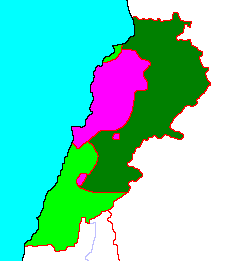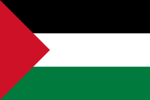
Back الوصاية السورية على لبنان Arabic الاحتلال السوري للبنان ARZ Militärisches Engagement Syriens im Libanon 1976–2005 German הסדר הסורי בלבנון HE Ocupação síria do Líbano Portuguese Syria chiếm đóng Liban Vietnamese
This article needs additional citations for verification. (August 2020) |
This article is missing information about its history and the civilians killed by Syrian forces. (March 2024) |
The Syrian occupation of Lebanon (Arabic: الاحتلال السوري للبنان) began in 1976, during the Syrian intervention in the Lebanese Civil War, and ended on April 30, 2005, after the Cedar Revolution and several demonstrations in which most of the Lebanese people participated. The withdrawal agreement was signed by President Bashar al-Assad and Saad Hariri, son of Rafic Hariri, whose assassination triggered the series of events leading to the withdrawal.
In January 1976, a Syrian proposal to restore the limits to the Palestinian guerrilla presence in Lebanon, which had been in place prior to the outbreak of the civil war, was welcomed by Maronites, but rejected by the Palestinian guerrillas.[1] In October 1976, at a meeting of the Arab League, Syria accepted a ceasefire. The League ministers decided to expand an existing small Arab peacekeeping force in Lebanon, but it grew to be a large Arab Deterrent Force consisting almost entirely of Syrian troops. The Syrian military intervention was thus legitimized and received subsidies from the Arab League for its activities.[2] Throughout the years of occupation, the Assad regime advocated the irredentist notion of "Greater Syria" ("al-Suriyya al-Kubra"), implementing various steps to integrate Lebanon into the Syrian fold.[3]
In 1989, at the end of the civil war, two rival administrations were formed in Lebanon: a military one under Michel Aoun in East Beirut and a civilian one under Selim el-Hoss based in West Beirut; the latter gained the support of the Syrians. Aoun opposed the Syrian presence in Lebanon, citing the 1982 UN Security Council Resolution 520.[4] In the resulting "War of Liberation", which erupted in March 1989, Aoun's forces were defeated and he himself exiled from Lebanon. In 1991, a Treaty of "Brotherhood, Cooperation, and Coordination", signed between Lebanon and Syria, legitimized the Syrian military presence in Lebanon. It stipulated that Lebanon would not be made a threat to Syria's security and that Syria was responsible for protecting Lebanon from external threats. In September that same year, a Defense and Security Pact was enacted between the two countries.[5]
With the consequent adoption of UN Security Council Resolution 1559 and following the assassination of the Lebanese ex-premier Rafic Hariri in 2005, and the alleged involvement of Syria in his death, a public uprising called the Cedar Revolution swept the country. Syria completed its full withdrawal from Lebanon on 30 April 2005.[6]

| Part of a series on |
| Ba'athism |
|---|
 |
| ||
|---|---|---|
Media gallery |
||
- ^ "Palestinian Camps in Lebanon", Palestinian Refugees in Lebanon - Where to belong?, De Gruyter, p. 4, 31 December 2003, doi:10.1515/9783112401880-003, ISBN 9783112401880, retrieved 15 February 2022
- ^ Weisburd, 1997, pp. 156–157.
- ^ Nisan, Mordechai (2017). "5: Syria: The Occupation of Lebanon". Politics and War in Lebanon: Unraveling the Enigma. New York: Routledge. pp. 93–116. ISBN 978-1-4128-5667-6.
- ^ United Nations Security Council Resolution 520 http://peacemaker.un.org/lebanon-syria-brotherhood-treaty91
- ^ Ginat et al., 2002, p. 196.
- ^ "Retrait syrien total fin avril au plus tard" (in French).
© MMXXIII Rich X Search. We shall prevail. All rights reserved. Rich X Search


